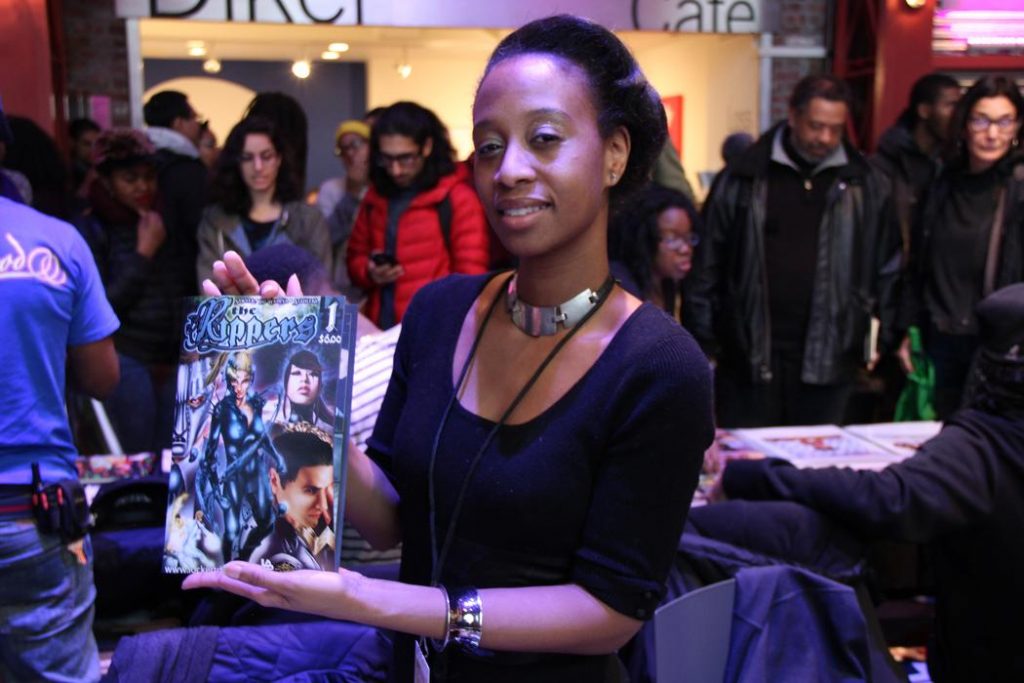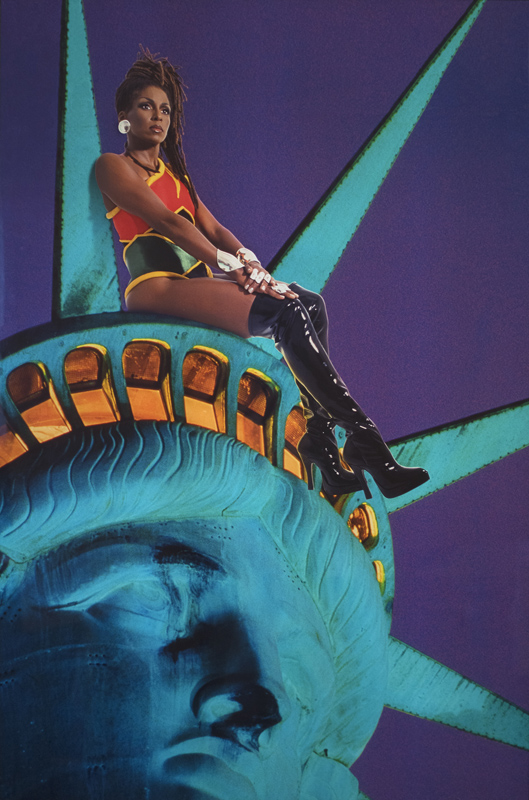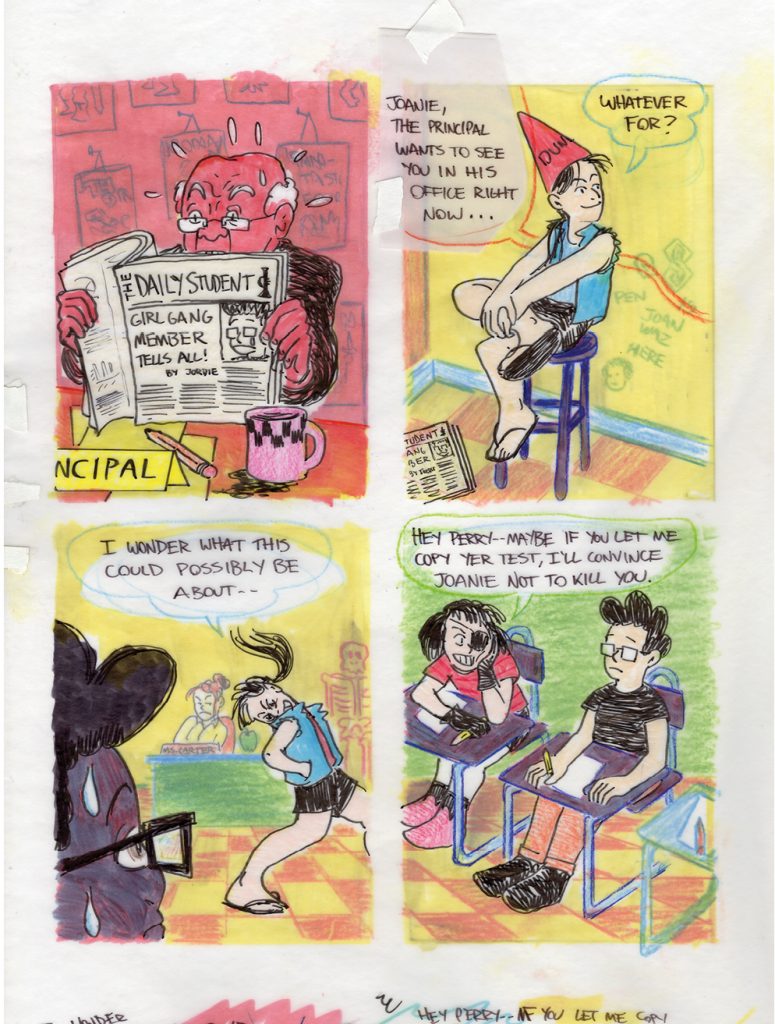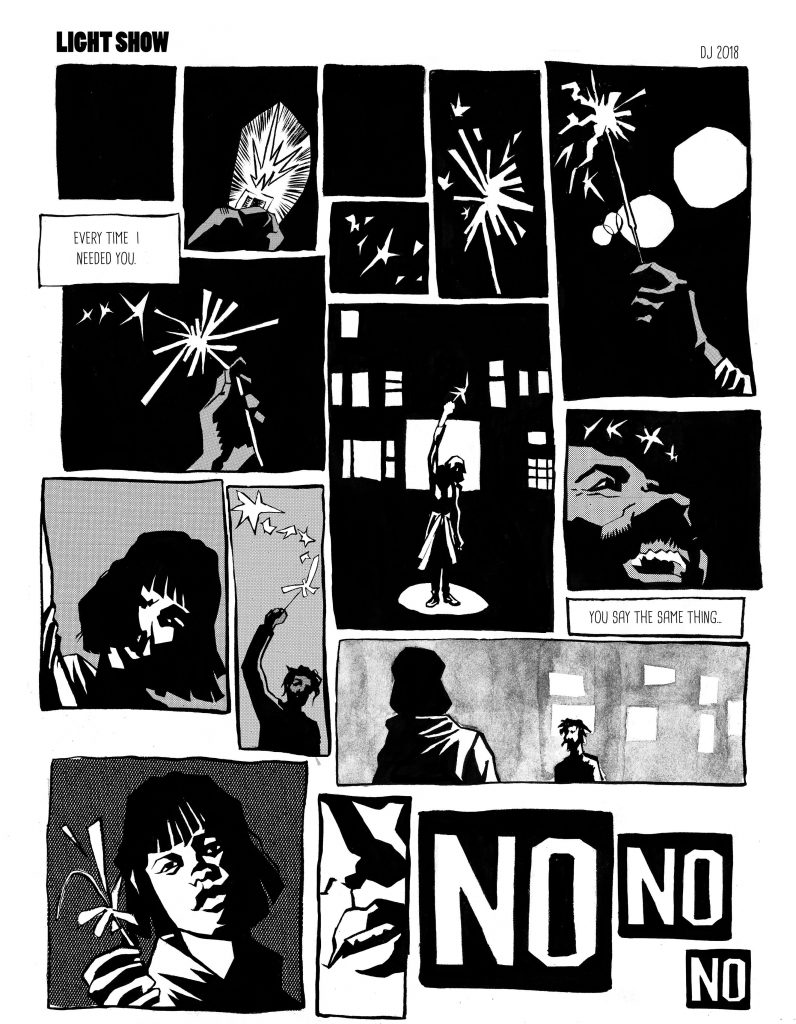Sally here with Regine L. Sawyer, the “Black Pulp” exhibition, new work from Derick Jones, and more!
—————————————————————————————————

Here’s a good article about the recent BAM Black Comix Expo, which features mini-interviews with a number of creators, among them Regine L. Sawyer (pictured above). She got into comics through X-Men.
“It’s a series that had so many women—and particularly women of color—with characters like Storm or Psylocke or Jubilee. Storm just jumped out to me because she was so regal and strong and beautiful. She will forever be my favorite character because of those aspects of how she carried herself. I knew, This is for me. I have to create comics.
I created my first series, The Rippers, when I was about 17 years old. I created it because there were books that I was seeing where I really didn’t like how women were portrayed. So I created a character named Rhiannon O’Cair who’s an intergalactic bounty hunter that’s accused of a crime she doesn’t remember committing.
Do you feel like your identity, gender, or ethnicity made it difficult to break into the comics community?
As a woman of color, starting out I wasn’t really considering who I was in that sense. I just felt that I was a writer—I had written comics and prose my whole life—and I just felt like I had something to give. So when I came into the community, and it became a “thing” that I was a woman and that I was black—it’s not that I wasn’t prepared for it, but I just felt like, “Oh man, are you serious?” I just really wanted people to read my books and not worry about what I looked like. When I realized that that was an issue a few years later, that’s when I founded Women in Comics and said, “OK, well if you’re going to look at me, you’re going to listen to me, too.” I had a lot to say about who I am and what is important to me. It’s so important that us as women of color have a say about how we’re portrayed in the media. So, now you can’t shut me up.
AdvertisementDo you feel excited about being in a fair that’s celebrating black creators?
I feel very fortunate to be a part of this movement. I’ve been going to shows and doing this for about 12 years, so I’m just very happy to see so many people that are here at this particular show who are out supporting not only us, but getting excited for Black Panther. To see this turn out is really really amazing, and again, I’m so happy to be a part of the movement.“
Read the rest of the article HERE.
—————————————————————————————————

There is an essay about the exhibition “Black Pulp” at the African American Museum in Philadelphia (through April 29the 2018) on Whyy. The exhibition showcases various forms of mass media, but there are a lot of comics involved, which is timely, considering the incredible success of Marvel’s The Black Panther film. One of the curators, Mark Gibson, remarked on what is interesting about that story in the context of more historic representation in comics and “pulp”.
“It was significant for Gibson to see people like himself represented in comic books. “I’m 38, and thinking about what comics meant to me, I would analyze the black characters to see if they are believable,” he said. “That wasn’t the same as with white characters.”
Gibson was impressed with the identity of the character. “He’s a black king from a country that has never been conquered by colonialism.”
Previously, comics with black main characters or by African-American artists were often restricted to a Negro audience. “Torchy in Heartbeats” is a serial about the romantic and work life of a beautiful young Negro woman in the 50s. “All-Negro Comics” (1948) was an anthology comic book that included “Dew Dillies,” about baby Negro angels. In 1965, Dell published “Lobo,” a collector’s book about a black cowboy fugitive.”
Read more about the “Black Pulp” exhibition HERE.
—————————————————————————————————
New work by Derick Jones above – you can keep up with what he’s been drawing and thinking lately HERE.
—————————————————————————————————
- Vice offers a look at Jackie Ormes – read it HERE. And then read Nancy Goldstein’s Jackie Ormes: The First African-American Woman Cartoonist, which the article draws from, for the full story.
- HERE is a review of Incognegro: Renaissance #2 by Mat Johnson – look for this new series on the shelf at your comic book shops.
- The Knox News has an article about Oliver (“Ollie”) Wendel Harrington, one of the first black political cartoonists – HERE.
- Samir Barrett drew the character Static every single day in February – see the drawings HERE. Read about his project HERE.
- Ramon Esono Ebale, a cartoonist from Equatorial Guinea who was jailed 5 months ago while visiting his home country to renew his passport, has had all charges against him dropped – but he’s still in jail.
- Whit Taylor writes and Chris Kindred draws this comic for The Nib about how the Tuskegee Experiment made African-Americans distrust the medical system – HERE.
—————————————————————————————————
Vision Box – 3-8-2018 – by Cameron Arthur
—————————————————————————————————

Joanie and Jordie – 3-8-2018 – by Caleb Orecchio


